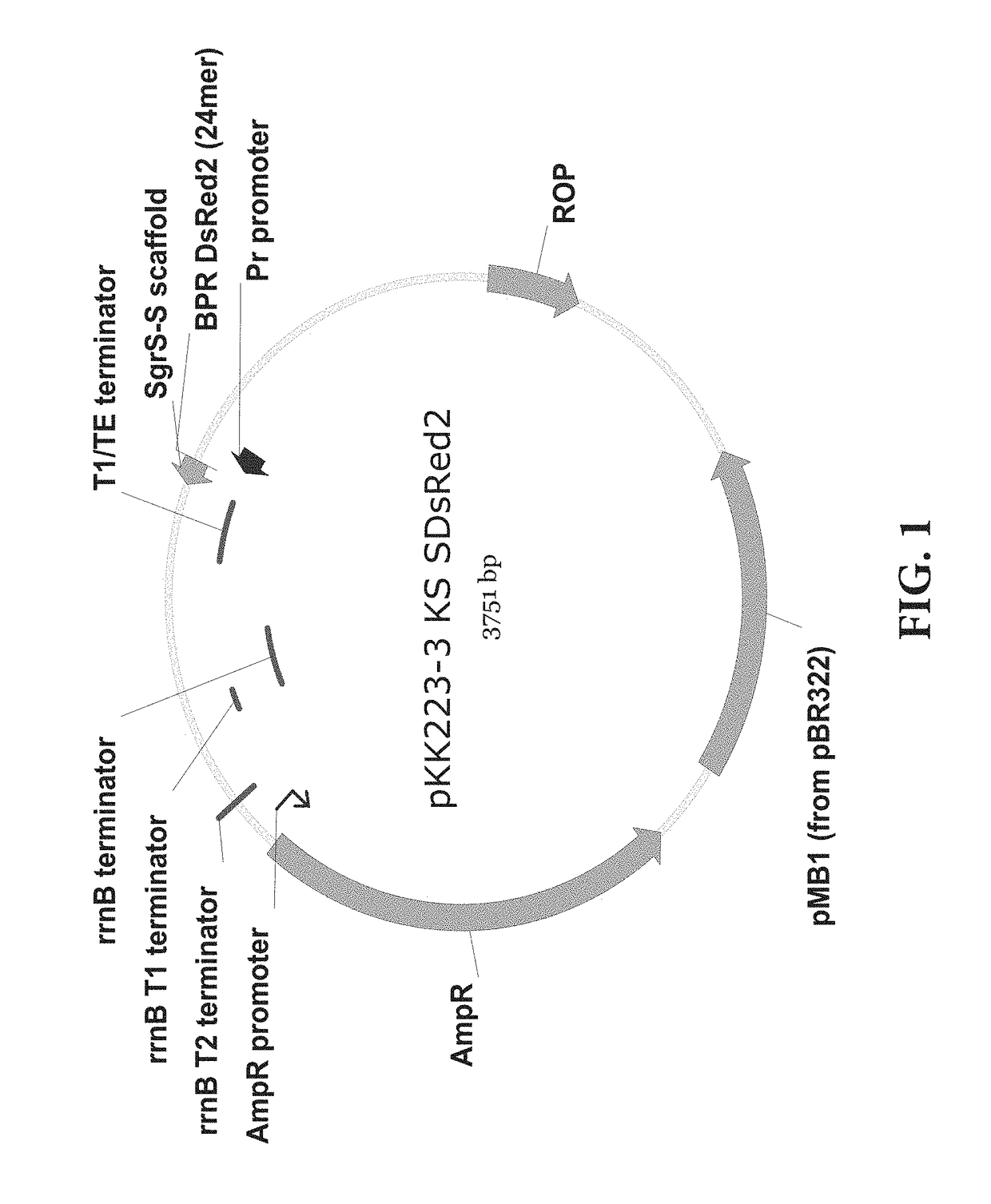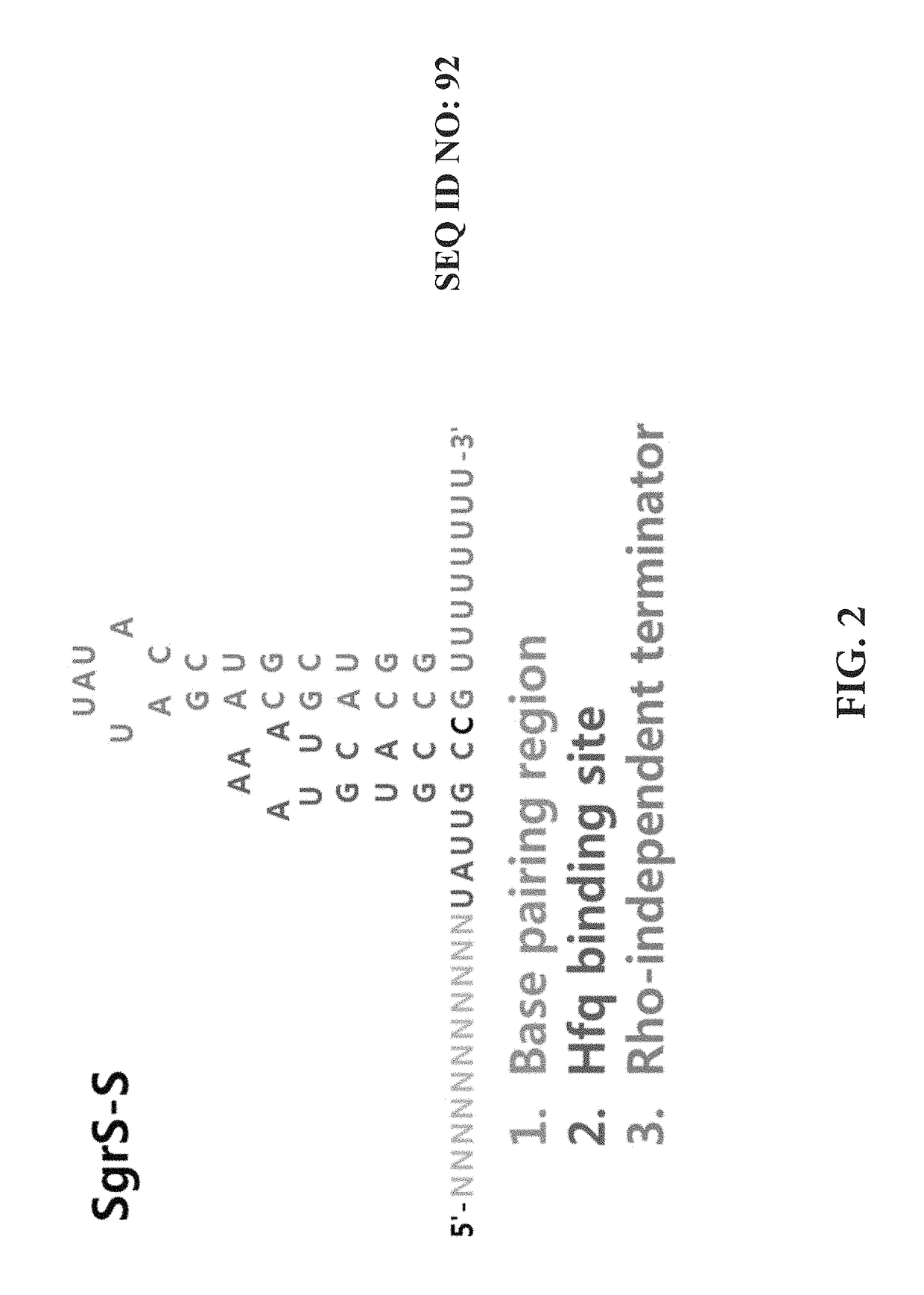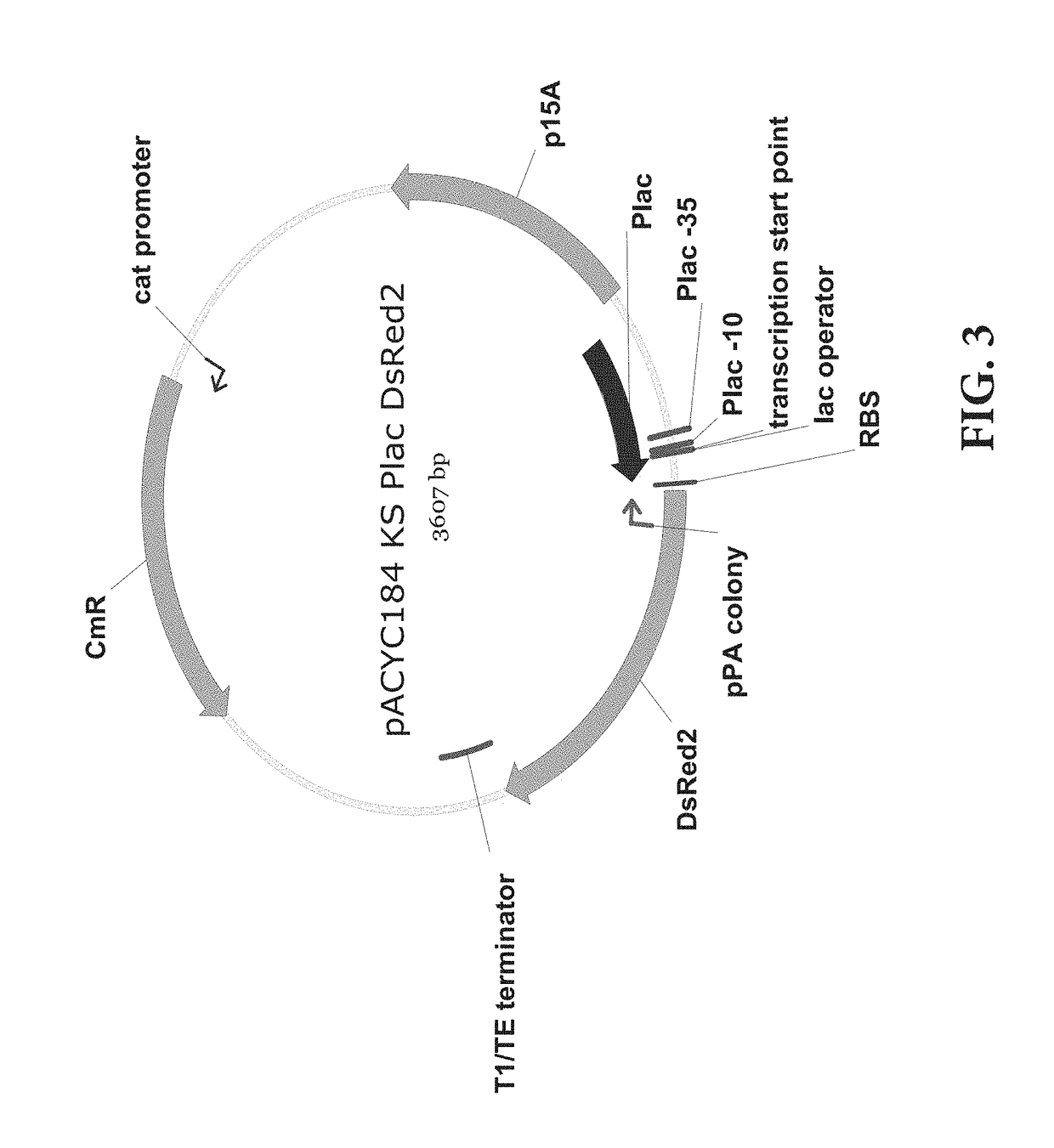Method for fine-tuning gene expression levels using synthetic regulatory SRNA
a technology of synthetic regulatory srna and gene expression levels, which is applied in the direction of recombinant dna-technology, dna/rna fragmentation, biochemistry apparatuses and processes, etc., can solve the problems of difficult to accurately predict changes in srna activity, methods may require more effort and time, and are difficult to predi
- Summary
- Abstract
- Description
- Claims
- Application Information
AI Technical Summary
Benefits of technology
Problems solved by technology
Method used
Image
Examples
example 2
n of sRNA Expression Through Introduction of Various Promoters and Effects Thereof
[0069]An experiment for fine-tuning the target gene inhibition was conducted by regulating the expression level of sRNA using a promoter showing various gene expression intensities. The plasmid and experimental method of Example 1 were used, and the promoter of sRNA was cloned by using the inverse PCR, and the promoters of Anderson promoter collection were cloned using primers of SEQ ID NOs. 13 to 46. The SgrS was used as the sRNA scaffold, and the promoters were J23100, J23101, J23102, J23103, J23104, J23105, J23106, J23107, J23109, J23111, J23112, J23113, J23114, J23115, J23116, J23117, and J23118. The results were shown in FIG. 6, and it could be appreciated that the intensity of the promoter was proportional to log values of protein inhibition efficiency.
[0070]
[0071]
J23100:[SEQ ID NO. 13]5′-GACTGAGCTAGCCGTCAAGCGGCCGCCACCGCGGTGGAGC-3′[SEQ ID NO. 14]5′-CTAGGTACAGTGCTAGCGATGACGTTCTCACTGCTCGCC-3′J23101...
example 3
gulation of Target Gene Inhibition Through Mutation of sRNA Scaffold
[0072]An experiment for fine-tuning the target gene inhibition was conducted by mutagenesis on the sRNA scaffold to change the activity thereof. The plasmid and experimental method of Example 1 were used, and the promoter of sRNA was J23105, which showed a 74% inhibition rate in the previous experiment. J23108 was used only in the experiment of FIG. 8. The plasmid expressing sRNA with the J23108 promoter was constructed by the inverse PCR using SEQ ID NOs: 51 and 52. Then, the scaffold was mutated by the inverse PCR using primers of the sequences listed below. The control groups were pKK223-3 KS without the sRNA scaffold and pKK223-3 KS SO without the BPR. All of the sequence mutation of the stem (FIG. 7), the change in stem length (FIG. 8), the sequence of loop (FIG. 9), the mutation of the UAUU sequence (FIG. 10), and the length of U tail (FIG. 11) in the stem loop of the mRNA SgrS scaffold could weaken or strengt...
PUM
| Property | Measurement | Unit |
|---|---|---|
| binding affinity | aaaaa | aaaaa |
| length | aaaaa | aaaaa |
| time | aaaaa | aaaaa |
Abstract
Description
Claims
Application Information
 Login to View More
Login to View More - R&D
- Intellectual Property
- Life Sciences
- Materials
- Tech Scout
- Unparalleled Data Quality
- Higher Quality Content
- 60% Fewer Hallucinations
Browse by: Latest US Patents, China's latest patents, Technical Efficacy Thesaurus, Application Domain, Technology Topic, Popular Technical Reports.
© 2025 PatSnap. All rights reserved.Legal|Privacy policy|Modern Slavery Act Transparency Statement|Sitemap|About US| Contact US: help@patsnap.com



